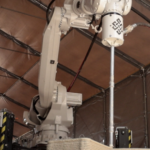MIT engineers have developed a model that predicts the impact of various shoe properties on a runner’s performance. The model, now reported in the Journal of Biomechanical Engineering, incorporates dimensions like height and weight, alongside shoe properties such as stiffness and springiness.
The study, led by postdoc Sarah Fay and Professor Anette “Peko” Hosoi, responds to the evolving landscape of 3D printed shoes, and is partly sponsored by Adidas.

By simulating a runner’s gait with different shoe types, the researchers identified shoes that minimized energy expenditure, defining superior performance. While the model excelled in comparing vastly different shoes, its discernment was limited with relatively similar designs.
“Shoe designers are starting to 3D print shoes, meaning they can now make them with a much wider range of properties than with just a regular slab of foam,” said Fay,of MIT’s Sports Lab and the Institute for Data, Systems, and Society (IDSS).
“Our model could help them design really novel shoes that are also high-performing.”
The researchers aim to enhance the model, envisioning a future where consumers use a similar version to select shoes tailored to their running style. The long-term vision involves a personalized approach, where individuals submit running videos, and shoes are 3D printed to match their unique needs.
This work emerges from collaboration with the sneaker industry, particularly with the advent of 3D printed midsoles. Designers sought guidance on predicting runner dynamics with novel shoe designs. The team drew inspiration from biomechanics pioneer Thomas McMahon, using a simplified “spring and damper” model to gain meaningful insights into athletic performance.
MIT’s model introduces a quantitative approach for designing shoes tailored to different running scenarios. As 3D printing makes inroads into the footwear industry, this research paves the way for a future where personalized, high-performance shoes are the norm, revolutionizing the runner’s experience.
Source: news.mit.edu
Come and let us know your thoughts on our Facebook, X, and LinkedIn pages, and don’t forget to sign up for our weekly additive manufacturing newsletter to get all the latest stories delivered right to your inbox.









